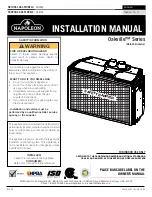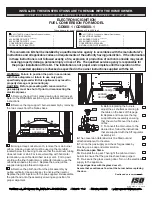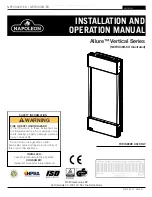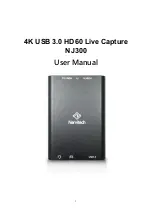
EFF7 - 1 - 110702
Declaration of Conformity
We, the sole distributor in the UK, declare that the product listed below is in conformity with the following standards and directives.
The construction file for this product is held by the manufacturer and may be inspected, by a national authority, upon
request to Jack Sealey Ltd.
For Jack Sealey Ltd., sole distributor in the UK of Sealey Professional Tools.
FUSE FINDER KIT
MODEL EFF7
73/23/EEC Low Voltage Directive
89/336/EEC EMC Directive
11th July 2002
Signed by Mark Sweetman
01284 757500
E-mail:
01284 703534
NOTE:
It is our policy to continually improve products and as such we reserve the right to alter data, specifications and component parts without prior notice.
IMPORTANT:
No liability is accepted for incorrect use of this equipment.
WARRANTY:
Guarantee is 12 months from purchase date, proof of which will be required for any claim.
INFORMATION:
For a copy of our latest catalogue and promotions call us on 01284 757525 and leave your full name and address, including postcode.
Sole UK Distributor, Sealey Group
,
Bury St. Edmunds, Suffolk.
Web address:
www.sealey.co.uk
5. OPERATION
4. CROCODILE CLIPS/TEST PROBES
6. DECLARATION OF CONFORMITY
Before use ensure that you read, understand and apply the safety instructions in Section 1.
5.1.
To check that the equipment is operating correctly, plug the transmitter (fig. 1.4) into the mains supply, switch on and then move the receiver
scanning head (see fig. 2) over the face of the transmitter. The frequency of the receiver bleeping will become very rapid or change to a
continuous tone and the LED will turn from red to green. If these indications are not present then the equipment is faulty.
5.2.
Connect the transmitter to the circuit in question using the clip/probe test lead adaptor (fig. 1.2 & 5) or 13A adaptor lead (fig. 1.3) as appropriate.
If possible, switch off the circuit before connecting the transmitter. After satisfactory and safe connection has been made, switch on the circuit.
The ON LED on the transmitter will illuminate.
5.3.
Switch on the receiver by pressing and immediately releasing the switch, see fig. 2.
5.4.
Hold the receiver so that the scanning head is touching the breaker/fuse as shown in fig. 3, and then steadily run the head along the row. It
is important that the head scans the same part of each breaker or fuse (in the case of breakers, either above or below the switch) since the
scanner is comparative and indicates the
strongest
signal detected. Thus when the receiver first indicates a signal {rapid/continuous
beeping and green LED)
do not
stop scanning as there may be a stronger signal to follow. It is important to scan all of the breakers/fuses
which may protect the circuit under investigation.
5.5.
Repeat the scanning sweeps until the signal indication is given only when the scanning head is over one specific breaker/fuse - this is the
one which protects the circuit being checked.
5.6.
To confirm correct selection, break the circuit by opening the breaker/removing the fuse indicated and the receiver should revert to a red
LED and steady beeping while the transmitter LED should no longer be illuminated.
5.7.
If it is unclear as to which breaker is producing the strongest signal then rescan the other ends of the breakers i.e. scan below the breaker
switch if the initial scan was above the switch and vice versa. Prior to rescanning the receiver
must
be reset by holding it away from the
distribution board and pressing and immediately releasing the switch (see fig. 2).
Alternatively, again after resetting the receiver, place the scanning head on a breaker as before and then slowly rotate through 90
O
(see fig. 4).
At some point the strongest signal will be found and the breakers should be rescanned at this angle.
fig. 2
fig. 3
fig. 4
To change from clips to probes on the test lead adaptor, proceed as follows:
4.1.
Unscrew the crocodile clips from the grips.
4.2.
Remove the fuses from the clips and insert them into the probes.
4.3.
Screw probes into the grips.




















